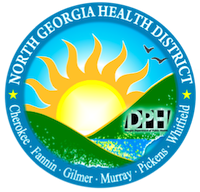
Although impressive gains have been made in HIV health outcomes, some clients continue to have difficulty taking their daily medications and keeping clinic appointments. The Living Bridge Center in Dalton, Georgia, is funded by the Ryan White HIV/AIDS Program (RWHAP) (Parts B and C). It has adopted HIV care delivery best practices to address these and other patient challenges.
The clinic serves a mostly rural area with limited medical care and access to HIV specialists. One of their techniques is use of a client acuity tool by the center's case manager. This helps prioritize case management resources, track the progress of patients, and monitor ongoing challenges.
Jeff Vollman, the North Georgia District HIV Director at the Georgia Department of Health, became familiar with the client acuity tool. This was during his former position at the Ryan White Part A TGA in Las Vegas, Nevada. The tool was initially vetted by the University of Nevada Las Vegas in collaboration with the Ryan White Part A TGA. Vollman brought the acuity tool to the Georgia clinic, and his team modified it to work in their setting.
The acuity tools is part of the clinic's F.A.S.T. strategy (Find, Assess, Stabilize, and Treat) which has helped Living Bridge achieve high rates of viral suppression for their patient population of people with HIV.
Below are highlights of F.A.S.T.
Finding | Assessing | Stabilizing | Treating
Finding
The Living Bridge’s prevention program has a single staff member who is charged with finding undiagnosed persons. This may occur in an atmosphere where many are reluctant to be seen at an HIV testing and care site.
The outreach testing program has prioritized efforts to include the following:
-
Twice-monthly community outreach at selected sites to reach high-risk populations. These sites included a criminal justice diversionary program serving people with low-level first-time drug charges, and a drug court for individuals facing felony charges.
- Monthly HIV testing at Dalton State College
- Training in HIV testing for community providers in order to expand the pool of testers.
- A DOH epidemiologist to identify clusters of diagnoses. Or persons who are most at risk, with the nurses and health educator focused on reaching these populations.
Assessing
The Intake Coordinator, Benefits Counselor, and a Registered Nurse participate in the initial acuity assessment.
Assessment Objectives
- At the initial visit a baseline health status (viral load and CD4 count) is established. Other needs are also determined, with assessment of eligibility (e.g., insurance coverage, income verification) to prepare clients for coverage.
- The team conducts an additional assessment. They use the acuity scale to determine a range of needs such as housing insecurity, mental health needs, and intimate partner violence. At this point a tailored service plan developed.
- Intensive case management is established for medium-and high-acuity patients
Clinical Case Managers are experienced Nurse. They maintain a relatively small caseload of 20 patients. They work directly with the health department's communicable disease specialists, enabling a rapid (within 1 week of diagnosis) initial visit and linkage to care.
Stabilizing
The Nursing Case Manager focuses most on clients with:
- Mental health issues
- Substance abuse issues
- Criminal justice system involvement
- Those with a history of falling out of care
Techniques include:
- Frequent (often, daily) phone calls and onsite/home visits
- Selective use of directly observed therapy (DOT) to ensure medication adherence
Roughly 90% of patients are retained in care, compared with the 79.75% retention figure for Georgia overall
Treating
Living Bridge's F.A.S.T. team has a caseload of 24 high-need patients. A physician is on site Monday through Thursday. Additional staff members include nurses and case managers as well as data and support staff. Offsite dental care and an onsite nutritionist round out the team.
80% of F.A.S.T. patients have achieved viral suppression and 90% of the clinic's overall PWH population has achieved viral suppression
About the Client Acuity Tool
Numeric values are assigned to social, medical, and financial barriers faced by patients. The Living Bridge acuity tool defines three intensity levels for 15 factors. Case management and referral plans are determined by the total scores.
Acuity Tool Elements
- The paper form was kept to 1 page so that nurse case managers could easily assess patient needs
- Acuity scale items cover 15 factors or barriers, including housing, finance, social support, and adherence
- The tool defines 3 acuity levels and appropriate responses for each barrier
- The acuity tool is built into the clinic's Electronic Medical Records (EMR) system. This allows staff to easily scan patient improvements and challenges encountered over time. For example, an uptick in housing needs, such as unstable housing conditions, can prompt staff to seek a connection to Housing Opportunities for Persons with AIDS (HOPWA). Likewise, progress can be acknowledged and reinforced with patients.